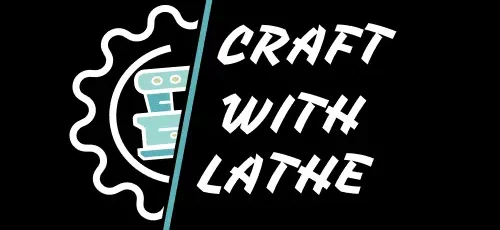The simple categories of wood to turn are pine and cherry. They’re effortless to adjust on the lathe. Bowl turners The simple types of wood to turn are pine and cherry. They’re effortless to change on the lathe. Bowl turners experience that walnut wood is the best wood. In this article, we will know about Best Wood for Lathe.
Selecting the Best Wood for Turning
Learning to turn wood takes a good lathe, sharp tools, and abundant practice. Still, working with suitable woodland can make a massive difference in the results by producing beautiful turns and extending your enjoyment in woodturning.
Best Wood for Lathe
-
Maple
Maple is a hardwood with a straight, dusty grain so you can get a good finish effortlessly. If you know any slit- avoidance where the finish is looking rough, also you need to grind your tools.
There are several types of maple, including spiral, catcalls-eye, tiger, and spalted maple. This range delivers a beautiful range of grain designs.
-
Oak
White and blooming oak wood are two of the most popular woodlands for cabinetry. Red and White oak are both hardwood and have a high duration rank.
Products you manufacture with oak will probably survive a stretch, repel damages similar to scrapes, and wear down from use.
Both are relatively popular for flooring as well. Red is recommended for its coloring; still, white wood is a little cheaper, and some find it a better option.
Both hold stains beautifully, and the natural patterns and grains add a nice touch to a finished bed or cupboard.
Some of the best items to twist with oak include chairs, tables, spindles, and guardrails. Bowls are also popular due to the designs throughout the wood, creating a lovely finish.
-
Hickory
Hickory is a hardwood, making it a tough wood to work with. Still, it turns well with sharp tools, making it ideal for specific strategies like bowls.
It does scrape effortlessly, so it’s essential to sand hickory with the grain to avoid breaking the wood. Hickory is also given to checking, so it’s necessary to be sensible when working with it.
Overall, hickory is a challenging but satisfying wood, and the results can be genuinely emotional.
-
Birch
Birch has a nice glow coloring with bands of dark strips running through it. Many largely prize it for this explanation and find it perfect for lower strategies similar to candlesticks, coasters, guardrails, and bowls.
Birch is frequently used for window dressings and is loved for its colors and unique patterns. Birch is a softer wood, so it’s easier to turn. Still, the delicate nature can also make it tear when you try to turn it and become burned out and break effortlessly.
For this reason, it’s best to use sharp tools when turning Birch and make items that won’t be uncovered to wear and ribbon. It’s best not to make out-of-door cabinetwork with this wood.
-
Ash
Baseball bats are traditionally manufactured from ash wood, and for good reason. Ash ranks between maple and cherry wood on the Janka scale of hardness, making it easy to twist.
It’s also great for manufacturing shock-resistant instrument handles. And because of its drying properties, you can turn it green without effect. So, if you’re looking for good wood for your coming baseball club or tool handle, ash is undoubtedly the best wood choice.
-
Elm
Elm has both soft and hard kinds. The distinction is produced through the different designs and pores within the wood, with the more delicate types having further pores and wet areas.
Some hard kinds include planed elm and gemstone elm; the soft styles include American, Wych, and Red elm.
The hardwood is undoubtedly the more popular variety, although it doesn’t tend to have the nice grains and patterns multiple love for turning bowls.
However, it’s suitable for products similar to tables and chairs, especially if you want to make out-of-door cabinetwork. The smell of elm is distinct and may not be the best option for inner usage.
-
Walnut
Fresh walnut is a lovely wood to turn, and time oiled, it’s beautiful. Walnut has a tight atom that takes a finish well. Black walnut has dark heartwood and light sapwood that can make the item stand out if absorbed into a piece.
Walnut is a hardwood that’s generally easy to work with. It has a beautiful grain design and a delicate white color that makes it perfect for various scenarios.
The only drawback to walnut is that it can be tricky to sand. Still, if you take your time and finish with several piles of oil painting, you should get a smooth closing that brings out the natural beauty of the wood.
-
Cocobolo
Cocobolo is a beautiful wood favorite for wood-turning operations and creating finely composed chopstick handles. It’s easy to work with, but the sawdust can be a bother, so taking precautions when applying it is meaningful.
The dust can create a rash, so wearing gloves and a mask is essential when working with this wood. In addition, it’s meaningful to work in a well-aired area to avoid inhaling the dirt.
-
Mahogany
My earliest favorite mahogany was the Cuban variety. It was popularised in the 1700s as a high-quality, rich wood for making precious cabinetwork.
The color is a heavy yellow, and the grain is lovely indeed. Still, Cuban mahogany is rare and precious as it has been overused throughout history.
Honduras mahogany is a new variety replacing the Cuban type, as it has a matching texture and coloring. Mahogany makes excellent cabinetwork and turns well.
The grain is indeed, and it finishes nicely. The drawback to this wood is the cost and availability.
-
Rosewood
All rosewoods are strong and heavy, taking an excellent polish, being suitable for guitars( the fretboards on electric and auditory guitars frequently being made of rosewood), marimbas, recorders, turnery( billiard cues, fountainhead pens, pitch-black scraps in chess sets, etc.), handles, cabinetwork, and comfort flooring, etc.
Rosewood oil painting, used in fragrance, is uprooted from the wood of Aniba rosaeodora, which isn’t related to the rosewoods used for timber. Rosewood is also used for handcuffs and chokers.
-
Bradford Pear
Bradford Pear is a hardwood and is also relatively thick and heavy. It can take a while to dry, and you want to be sure you allow for a good atmosphere that’s dry and warm.
It’s elegant and used for lower pieces, with turned pens being an excellent choice. Other great choices are timepieces and cosmetic boxes for jewelry.
It corresponds to turning other product-bearing trees with the humidity and has nice ribboning and designs outside. However, because of the moisture, you want to be careful it doesn’t check, warp, or woof after turning.
-
Eucalyptus
It’s gorgeous, environmentally friendly, easy to work with and incredibly functional. It’s also less expensive than customary hardwoods like mahogany, hickory, and cherry woodland.
Eucalyptus fencing is accessible in pre-fabricated forums and rolls. It is essential that accessories can elevate an outfit, and millwork offers a finishing touch that can take space to the following position.
In addition to its energy and aesthetic appeal, eucalyptus has excellent machining and turning properties. It’s a great choice for moldings, fences, and the guardrails that line staircases or ramps.
-
Hawthorn
It’s an excellent wood for turnery as it’s rigid and inflexible. It was used for window dressing, cupboard work, boxes, tool handles, workshop-wheel teeth, mallets, and small craft ribs. It also makes excellent cordwood and watercolor.
-
Pine
Pine is an excellent wood for embarking turners. It’s a soft wood and is easy to shape on the lathe. Cutting with a soak or disposable chisel produces a better finish than a scraper when turning between centers. You’ll need a duly polished scraper to create a well-grounded surface when turning bowls.
-
Conifer
The profitable uses of conifers can be accessibly divided into those centering on wood, other secondary products, and horticulture. produce weightless, relatively soft, delicate white to dull brown wood; the high-grade woodland from woods
-
Yew
Yew tree wood is hefty, solid, and elastic, ideal as wood for turning and sculpting, and also veritably resistant to humidity. There are no imprints of resin in the wood or sailboat. The points of the periodic rings are easy to see, which makes the wood unique.
-
Beech
It is very light in the shade and does not conduct any flavor or smell if used in a food-grade design. While some might suppose this a disadvantage, others would embrace the plainness of this wood and use it as a difference in segmented turnings, to affect other, more priceless hardwoods, or indeed to make bowls and other particulars for drinking and dining.
What Makes a Piece of Wood Hard to Turn?
Lots of Knots: wood with lots of knots will be more tricky to turn for a first-year student since you’re likely to have tool catches( where your lathe tool gets caught by the wood and causes wood damage and may affect injury).
Hardwood: Hardwoods dull tools rapidly and need the skill to turn them quickly. Some types of wood have complicated grain structures, making it more delicate to hang well.
Rotten or uneven wood: The wood is spoiled in some places and has cracks, which could be better for a freshman. You may get injured fluently if this timberwork breaks off from the lathe at high speeds.
Wrapped Grain Direction: The direction of the grain on the wood you’re working on is an overcritical part of twisting wood successfully. Grain running transversely may present issues when turning and breaking off while riding.
Conclusion
Selecting the best wood for lathe turning involves considering multiple factors, including wood thickness, flexibility, grain pattern, and stability. Experimenting with different woodlands allows woodturners to understand better each wood’s unique characteristics and how they affect the turning process. Whether you prefer the classic fineness of maple or the bold colors of fantastic woodland, the right choice of wood can elevate your lathe turning systems to new heights, creating masterpieces that showcase skill and creativity.
FAQ’s
Can I turn green( newly cut) wood on a lathe?
Yes, but be careful. Use thicker blanks, seal the ends to decelerate drying, and exercise long-suffering, as green wood may warp and woof or crack during drying.
What safety cautions should I hold when using a lathe for woodturning?
Prioritize safety by wearing PPE, securing the workpiece, starting at low speeds, minding your clothing, and maintaining a clean workspace.
What introductory tools should I invest in for woodturning on a lathe?
Essential tools include a roughing soak, spindle soak, disposable chisel, parting tool, and bowl soak. Also, calipers and measuring instruments ensure perfection in your turning systems.




